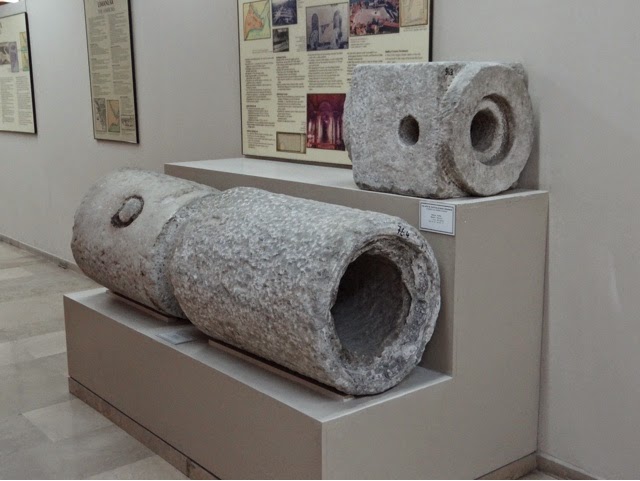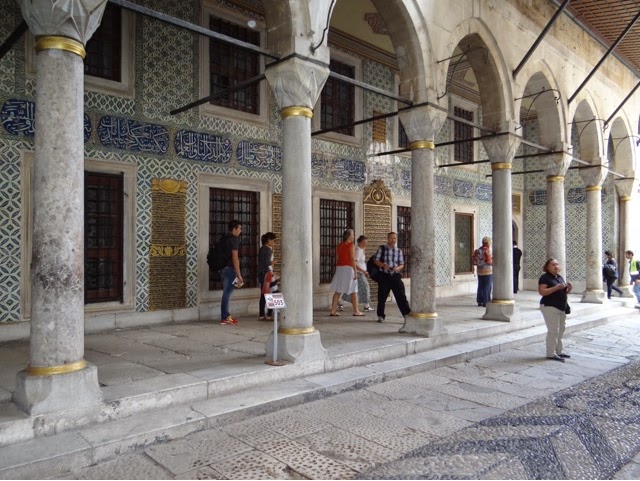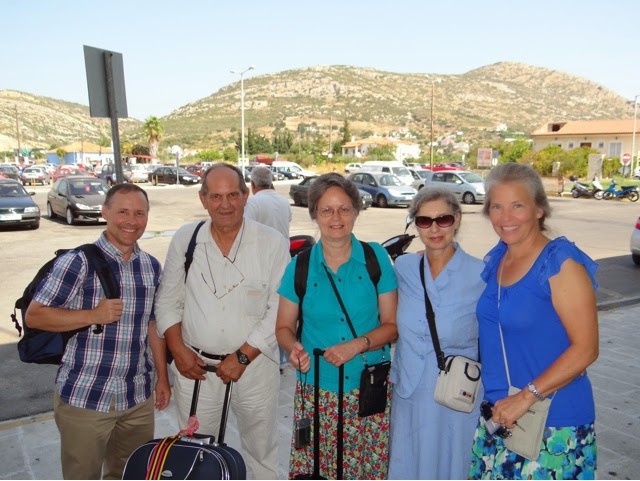The next day they took the tram back, and together we visited the Hagia Sophia, the Cistern of Justinian, and the Blue Mosque.
The following day, we walked through the Palace of Topkapi. It is "beautiful for situation," occupying a low-lying hill right where the Golden Horn joins the Bosphorus. Lovely views up and down the historic waterway, smack dab in the middle of Istanbul with its eight million people. The palace complex is surrounded by an ancient wall, and consists of many elegant buildings and covered walkways interspersed in a beautifully landscaped setting.
On day three we met Erica Chapman, Miriam Beyer, Chanel, Mike and Sandra at Taksim Square, one of the main open plazas in Istanbul. Erica then lead us down a street famous for its sights, smells, and hordes of people.
The Hagia Sophia in Istanbul
A wall mosaic showing the emperor giving a bag of money to the Virgin Mary for the construction of the Hagia Sophia. The reward for his amazing generosity is found in Mathew 6:2.
We then headed to the Blue Mosque, where we were given the proper attire
One of the foot washing facilities at the mosque. They are segregated; one for the men and another for the women.
The interior of the mosque. The dome is supported by 4 huge pillars.
Across the street from the Hagia Sophia was the cistern of Justinian. This vast "water tank" had been hidden for 1,000 years. It is enormous! I counted 28 rows of pillars and 12 columns, all spaced at 20' intervals. They say it holds 100,000 tons of water, enough to supply the old Byzantine city for years.
These stone pipes and connectors were used to flow water in and out of the cistern. No, they are not concrete.
October 2 - We visit the palace of Topkapi
The entrance to Topkapi Palace
The view from the palace gate looking back out.
The crew in an interior courtyard
A typical scene
The Circumcision Room
The entrance to the harem
The king's chambers were right next to the harem. Probably just a coincidence...


















































